

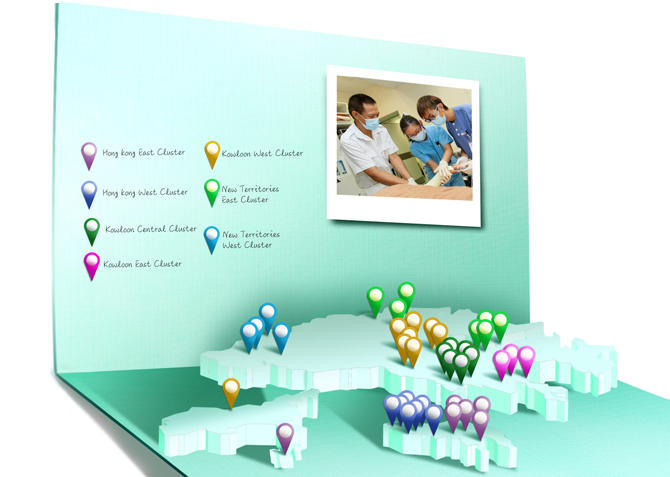
The Hospital Authority (HA) provides public healthcare services to the people of Hong Kong through the Head Office and seven hospital clusters. Head Office and Cluster Report present an overview of the performance of HA Head Office and Clusters under six corporate strategic intents and also achievements in contributing to a friendly environment.
 |
We organised 23 specialty simulation training programmes for doctors to enhance their career development opportunities and professional capabilities. 300 student nurses were enrolled in the Higher Diploma in Nursing Programme while 100 students participated in the Enrolled Nurses Training Programmes. Overseas training scholarships were provided to around 180 healthcare professionals including doctors, nurses and allied health staff. Due to the lack of local training for podiatrists, 3-year overseas scholarship was offered to 11 podiatrist students to attend training in the United Kingdom. Midwifery training programmes with an annual intake of 83 trainees were organised to meet escalating demand for maternity services in public hospitals. |
| Other than training on patient-centred communication skills, personal effectiveness and team building for professionals and supporting staff, management enhancement courses were organised for 1,641 first-line managers and 450 experienced frontline professionals. | |
To ensure effective succession of senior leadership, the HA Executive Leadership Programme in 2014–15 has prepared 89 candidates for key leadership positions. To strengthen occupational hygiene and safety, a 3-year occupational hygiene and chemical safety work plan was formulated. Key initiatives include an in-house nitrous oxide exposure monitoring exercise at HA labour wards to validate the effectiveness of control over |
|
| fugitive nitrous oxide; a comprehensive noise assessment for prosthetic and orthotic operations; and provision of noise hazard awareness training to enhance hearing protection for staff. | |
| Clinical management for patients diagnosed with Human Immunodeficiency Virus (HIV) was strengthened with multi-disciplinary care through providing highly active antiretroviral therapy to eligible patients in Queen Elizabeth Hospital and Princess Margaret Hospital. Genotyping resistance test was established to guide antiretroviral treatment and monitor the emergence of drug resistance . |  |
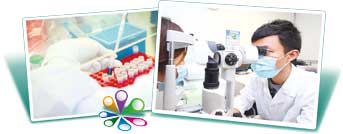 |
Management and secondary prevention of chronic diseases was enhanced. In the area of mental health, community care for psychiatric patients was further strengthened through extending the Case Management Programme to three more districts, namely |
| Tsuen Wan (including North Lantau), Yau Tsim Mong and Tai Po, providing intensive and personalised case management support to patients with severe mental illness. Physical environment of psychiatric inpatient admission wards in Pamela Youde Nethersole Hospital, Tai Po Hospital and Kowloon Hospital were modernised as on-going efforts. Therapeutic elements for psychiatric inpatient services were improved with strengthened workforce of psychiatric nurses and allied health professionals in all seven clusters, providing recovery-oriented treatment programmes facilitating early discharge and re-integration of psychiatric inpatients back to the community. | |
| We provided timely and appropriate treatment of eye diseases for elderly patients through enhanced specialist eye services for treating age-related macular degeneration, diabetic retinopathy and glaucoma. Additional 4,650 visual field test and 4,650 Ocular Coherence Tomography scans were performed for glaucoma patients, and a total of 160 additional vitreoretinal procedures were conducted for patients with sight-threatening diabetic retinopathy. |  |
| Services with pressing issues of waiting time and access were improved. Accident and Emergency (A&E) Department Support Session Programme implemented in 12 hospitals since 2013 had alleviated the workload of frontline staff working. The programme continued in 2014 and provided support sessions handling Triage IV (semi-urgent) and Triage V (non-urgent) cases#. | |
# Patients attending A&E departments in HA hospitals are divided into five categories (Triage I to V) according
to |
|
Anticipated rise in service demand during winter surge period was managed with six key strategies namely managing demand in community, gate-keeping to reduce unnecessary admission, improving patient flow, optimising buffer capacity, reprioritising core activities and enhancing communication with the public through mass media and daily release of service statistics during Chinese New Year. A total of 5,962 additional General Outpatient Clinic quotas during the surge period alleviated pressure on A&E services.
|
|
| The HA supports healthy competition and co-operation among healthcare services providers. Public-Private Partnership (PPP) in healthcare services optimises the use of healthcare resources in both public and private sectors and also helps shorten the waiting time for public healthcare | 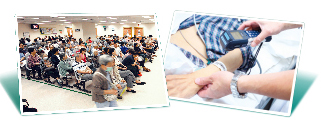 |
services. In 2014-15, over 3,500 patients had benefited from pilot PPP programmes of cataract surgeries, primary care service and radiological investigation service. The haemodialysis (HD) PPP programme were extended to 20 additional public patients. The new GOPC PPP programme launched in Kwun Tong, Wong Tai Sin and Tuen Mun districts since March 2014 also benefitted over 3,500 patients.
|
|
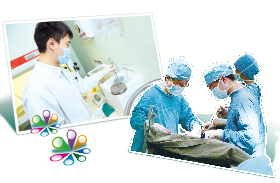 |
Strategic intent: Ensure service quality and safety HA continues to build safety culture corporate-wide. Critical incident psychological services for HA staff have been strengthened to improve preparedness and response for crisis intervention. Four Critical Incident Psychological Services (CIPS) Centres and Cluster Staff Psychological |
Services Clinics were set up in four clusters (Hong Kong West, Kowloon Central, New Territories East and New Territories West) to provide timely and quality one-stop critical incident psychological services for employees. |
|
| Safer service models were developed in various clinical areas. A corporate-wide barcode-based tracking and archiving system implemented in 14 HA hospitals with anatomical pathology laboratories ensured correct identification in processing anatomical pathology specimens. The reuse of single use |  |
device was reduced in phases based on prioritisation of clinical risk. Breastfeeding support teams were established in Queen Mary Hospital, Queen Elizabeth Hospital and Kwong Wah Hospital to enhance necessary nursing support with improved clinical setting and physical environment. |
|
 |
HA adopts modern technology and new treatment options to ensure service quality and patient safety. Additional recurrent funding was provided to widen the scope of HA Drug Formulary for the treatment of psychosis, dementia and prostate cancer. New technology of Matrix-Assisted Laser Desorption / Ionisation Time-Of-Flight (MALDI-TOF) Mass Spectrometry was installed in Queen Mary Hospital, Prince of Wales Hospital, Princess Margaret Hospital and United Christian Hospital to speed up microbiological identification for timely diagnosis and treatment. Minimally invasive surgery (MIS) technique was adopted in 70% of the hysterectomy surgeries conducted for suitable gynaecological patients. The facilities and equipment in operating theatre in Queen Elizabeth Hospital and Tuen Mun Hospital were modernised with MIS suites set up. |
Continuous quality improvement systems were implemented to improve clinical practice, including an HA-wide Clinical Outcomes Monitoring Programme with three nurse reviewers recruited to develop data capture template for monitoring clinical outcomes. Improvement of hardware and facilities continued to ensure service quality and safety. Barrier free access in 16 acute hospitals and most General Outpatient Clinics were improved. With continual funding support from the Government, 751 medical equipment items were installed in public hospitals, and 309 pieces of medical equipment were acquired. |
 |
Strategic intent:
Enhance partnership with patients and community
HA adopts patient-centred approach in communication with patients and carers. Involving patient groups and community partners is an important strategy in care delivery. The Patient Empowerment Programme (PEP) was implemented with non-governmental organisations (NGOs) to provide chronic disease patients with disease specific education and self-care skills and thus enhance chronic diseases management. An additional 14,000 patients were recruited to participate in the PEP.
Case managers were recruited in Tuen Mun Hospital, United Christian Hospital, Alice Ho Miu Ling Nethersole Hospital and Queen Mary Hospital/The Duchess of Kent Children’s Hospital to support children with special-care needs such as those with mental retardation or physical disabilities.
 |
The core services of Patient Resources Centres , self-help groups and clinical teams have been aligned to develop collaborative projects on patient support so as to enhance partnership with patients and community. Seminars and sharing sessions were also organised with graduates of the Patient Partnership in Action programme to intensify the participation of patient leaders. The Health InfoWorld has been refurbished and volunteers were trained in supporting its operation. |
A proactive approach is adopted to maintain rapport and communicate with the media and community stakeholders to keep them abreast of the latest development in HA policies and services. During the year, 223 media activities were organised, 369 press releases issued and 340 articles contributed to various media platforms. 1,900 media enquiries and 187 community enquiries were handled.
A 6-episode docudrama produced in collaboration with Radio Television Hong Kong and broadcast from September to October 2014 received overall positive feedback. The drama specifically portrayed the dilemmas, challenges and humanistic sides of HA staff. The series recorded an average 11.5 points in TV ratings, representing around 0.74 million per episode. The click rates of YouTube and HA Channel of all docudrama related videos also reached 26,000 times. |
 |
Strategic intent: The Government continued to give strong support to public healthcare with subvention to HA reaching HK$49 billion in 2014-15. As a responsible public organisation, we continue to undertake prudent measures on financial management to ensure resources are properly safeguarded and appropriately deployed. |
 |
To facilitate value-for-money delivery of quality patient care, HA stays vigilant in revisiting and monitoring resource management to optimise output and performance. Through continuous engagement with internal stakeholders, additional resources were allocated to Clusters during the service planning process for new services and specific pressure areas or gaps in addition to resources needed to sustain core and centralised services of respective Clusters. |
|
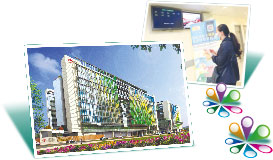 |
A series of hospital development projects have been planned and implemented to meet service needs. Key milestones achieved in 2014-15 included the completion of Yan Chai Hospital redevelopment and piling works of Hong Kong Children’s Hospital. Technical feasibility statements were completed for the extension of Tuen Mun Hospital |
Operating Theatre block and the construction of a new acute hospital at Kai Tak development area. Information technology used in healthcare improves patient care by allowing storage, sharing and analysis of healthcare information. We further leveraged technology to improve service efficiency and enhance medical safety. The use of digital imaging was widely deployed and will be extended to operating theatres of selected major acute hospitals. The expansion of the Inpatient Medication Order Entry (IPMOE) system to Princess Margaret Hospital, Tseung Kwan O Hospital, North Lantau Hospital and Prince of Wales Hospital has further cut the risk of prescription errors. The system will be implemented in all acute hospitals. Over 20 mobile applications are now in operation or under development for staff and public use, including TouchMed, which frees patients from extended waits at our pharmacies. Human resource system has been enhanced to expedite leave application and approval, covering about 32,000 staff so far. | |
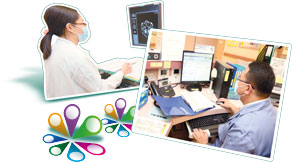 |
Corporate application systems were implemented in all new hospital buildings, including North Lantau Hospital and Yan Chai Hospital, with the network infrastructure upgraded for better availability, efficiency and stability. Internal controls have been upgraded by enhancing business administration and enterprise resource planning technology throughout HA hospitals with asset management and maintenance service processes streamlined. |
Ensuring patient data privacy is of prime importance in HA and is everyone’s responsibility. Committed to promoting and strengthening privacy protection, identifying emerging privacy risks and responding efficiently, we have maintained an ongoing personal data protection education and training programme for all staff to ensure awareness on the need for privacy protection. A robust privacy infrastructure is maintained with resources allocated to continually perform internal privacy compliance checks and engage independent third parties in privacy and security assessments. We also participated in the Privacy Management Programme led by the Privacy Commissioner for Personal Data. We continued to review and enhance IT system availability, performance and accuracy of data through established quality assurance and risk management processes.
HA continued to provide technical agency services to the Hong Kong Government in developing the eHealth Record Sharing System, Elderly Healthcare Voucher Scheme, Vaccination Subsidy Schemes, Primary Care Directory System, Communicable Disease Information System, Laboratory Information System and Colorectal Cancer Screening Programme System.
Strategic intent: |
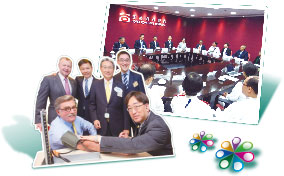 |
The enhanced practices at the Board level, together with relevant provisions of the HA Ordinance, the Standing Orders as well as various principles and corporate policies adopted by HA on corporate governance, were consolidated in the Code of Corporate Governance Practices of HA Board (the Code). The Code aims to provide appropriate structures and processes in ensuring a robust governance and accountability framework to guide members of the Board and committees in performing their roles and responsibilities. |
|
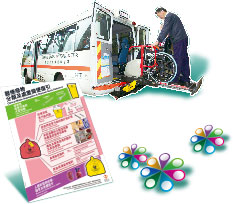 |
The Manual on the Operation of Hospital Governing Committees (the Manual) was updated on corporate governance practices at the cluster/hospital level, consolidating various corporate governance policies and practices adopted by the HA Board and the Hospital Governing Committees (HGCs) over the years, and also the initiatives implemented at the recommendation of the Corporate Governance Review. The Manual aims to provide guidance to HGCs members in discharging their responsibilities. Both the Code and the Manual were approved by the Board in April 2014 and July 2014 respectively. |
Contributing to a Green Environment HA is committed to achieving the best practicable environmental standards and practices to ensure environmental protection and minimise adverse impact on the environment. Over the years, a wide range of energy conservation initiatives have been implemented in new hospital developments and existing hospitals. These initiatives include the application of energy conservation and renewable energy technologies in lighting, air-conditioning, steam and |
 |
hot water systems in HA premises. In January 2015, we commenced the building of Hong Kong’s first hospital application of combined heat and power system in Alice Ho Miu Ling Nethersole Hospital (AHNH). Upon its completion in mid-2016, the system can help AHNH reduce 2,000 tonnes or 12 per cent of carbon emission, and save HK$2 million of energy cost per annum. |
|
Various waste reduction and recycling programmes continued in hospitals, some of which were collaborated with non-government organisations. A total of 3,500 tonnes of recyclables including waste paper, plastic, metals, glass bottles, used clothes were collected. 21 hospitals achieved the Certificate of Appreciation for Used Clothes Recycling Programme from Friends of the Earth, and 29 hospitals and institutions were awarded the Class of Excellence Wastewi$e Label of the Hong Kong Awards for Environmental Excellence.
Food waste reduction programmes such as promotion of waste reduction at source and adoption of low carbon menu continued. 15 hospitals have environmental friendly food waste decomposers implemented or participated in various food recycling programmes to further minimise food waste disposal. Last but not least, the use of environmental friendly LPG vehicles played a role, with four Non-emergency Ambulance Transfer Service vehicles replaced and three more added in 2014-15.